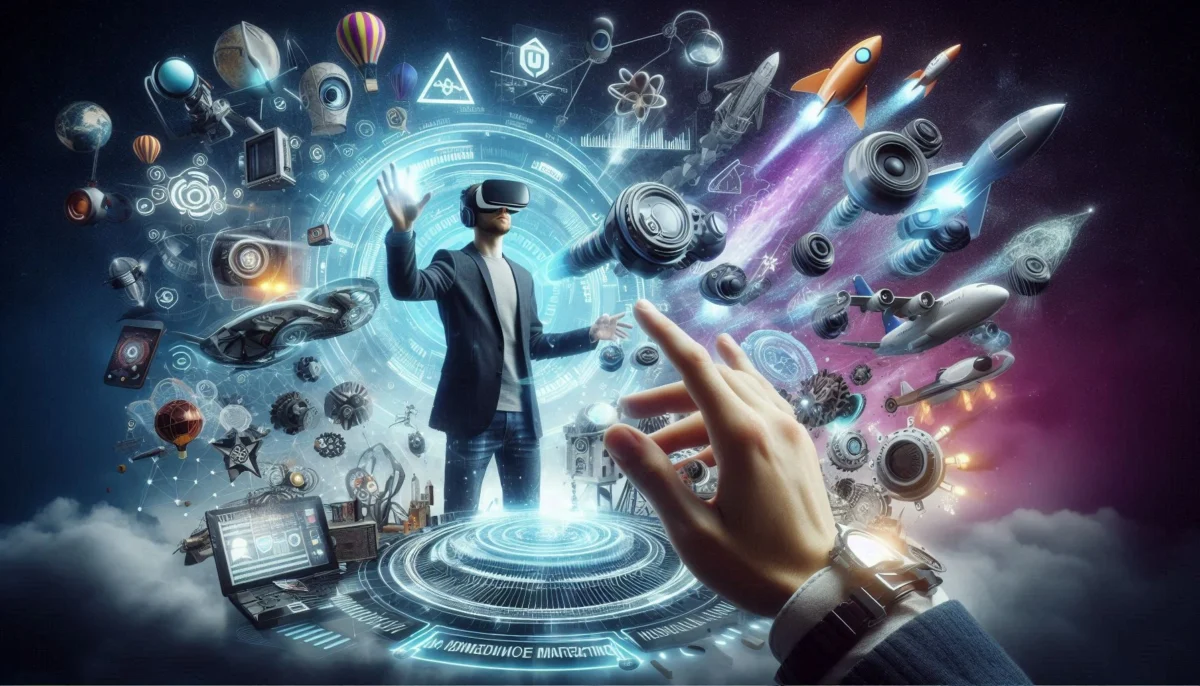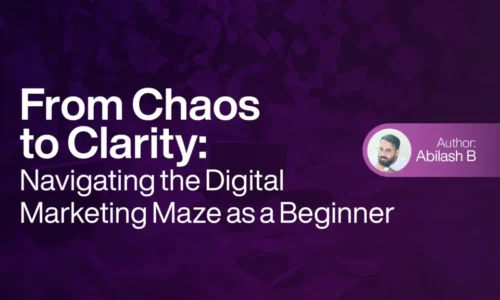Immersive Marketing: Boosting Brand Connection with AR and VR
Imagine you’re planning a vacation and need to choose a destination. What if you could take a virtual tour of your ideal holiday destination before booking the trip? That is quite interesting, isn’t it?
Here’s where immersive marketing comes into play.
Table of Contents

What is Immersive Marketing?
Immersive technologies, such as AR and VR, are poised to revolutionise marketing by allowing business to reach out to customers in new and deeper ways. It merges the digital and physical worlds to create dynamic and immersive experiences, giving advertisers a tremendous tool for focussing attention, increasing engagement, and directly contributing to sales.
What is AR and VR?
Before analysing the marketing prospects provided by these technologies, it is necessary to first define Augmented Reality (AR) and Virtual Reality (VR).
Augmented Reality (AR):
users to interact with artificial creatures in their real-life situations showcasing how marketers can effortlessly integrate digital material into daily life.
Virtual Reality (VR):
The Marketing Potential of Immersive Technologies
Immersive technologies enable advertisers to design and deliver experiences that reach people on a deeper emotional level than ever before. Here are some of the ways these technologies should be used to increase marketing returns:Enhanced Engagement
Improved Customer Understanding
Innovative Storytelling
Personalization

Case Studies: Real time examples of immersive marketing
To better understand the potential of immersive technologies in marketing, let’s explore some successful case studies:
- Coca-Cola: Their augmented reality “Share a Coke” campaign allowed people to personalise cans with their names and share them via social media. Furthermore, their VR “Journey to the North Pole” experience immersed participants in a magnificent winter wonderland.
- Sephora: The Sephora AR app enables users to visually try on makeup, removing the need for testers and lowering contamination hazards.
- Nike: Nike has developed AR interactive shoe try-on experiences that allow buyers to visualise several styles on their feet.
- IKEA: Their augmented reality software enables customers to virtually place furniture in their homes, allowing them to see how it will fit into their space. Volkswagen: They created VR experiences that allow customers to virtually test drive automobiles in diverse surroundings.
Challenges and Considerations
Although these immersive technologies have a lot to offer, the challenges do still exist. Consumers may also be deterred from using VR due to the hardware limitations mainly as regards comfort and price of the head gear. In addition high quality immersive experiences may also attract complex technological investment
The Future of Marketing: Embracing New Technologies
It is clear that the enhancement and advancement of these immersive types of technology will always have the ability to develop more and more new paradigms in the realm of marketing. The future of brand marketing in the digital era requires marketers to comprehend both the upside and downside of these technologies.
Conclusion
Everyone will agree that in these present days consumers are bombarded with very many marketing communications, thus, standing out is imperative. This is where immersive technologies can make a difference an exception to allow brands to engage the audience emotionally. The things AR and VR bring are what every marketer has been waiting for – connecting with clients effectively, maintaining their attention, attracting their loyalty, and achieving success in the long run.
Any incorporation of these immersive technologies and marketing strategies is bound to not only boost the level of interaction with customers but also ensure that one-off interactions are converted to passionate brand advocates. However, it remains to be seen as to whether the pace of change forces early
adopters of these tools gain far more competitive advantages due to rapid development of external companies in the marketplace.



